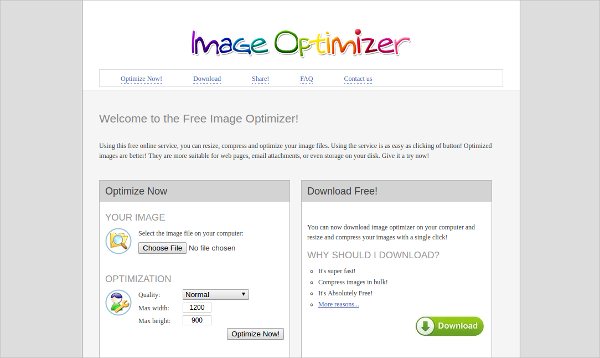

Resizing an image can have a significant impact on its file size for example, downsampling an 800圆00 pixel photo to a 200x200 pixel thumbnail can dramatically reduce its file size without compromising much of its visual detail. Most image optimization software applications provide options for resizing images either by percentage or by dimension (width and height). Lossy compression can be more efficient at reducing the file size than lossless methods but may result in a noticeable reduction in quality depending on the degree of compression applied. Lossless compression reduces an image's file size without any perceivable degradation in its quality, while lossy compression algorithms discard some data from the image in order to reduce its size even further.

The two main types of image optimization software are lossless and lossy compression algorithms. By reducing an image's file size, image optimization software can help to reduce bandwidth usage on websites and improve website loading times. This type of software typically enables users to optimize the size and quality of their images while still preserving their original appearance. Image optimization software is a useful tool that allows you to automatically resize, compress, or reformat digital images.


 0 kommentar(er)
0 kommentar(er)
